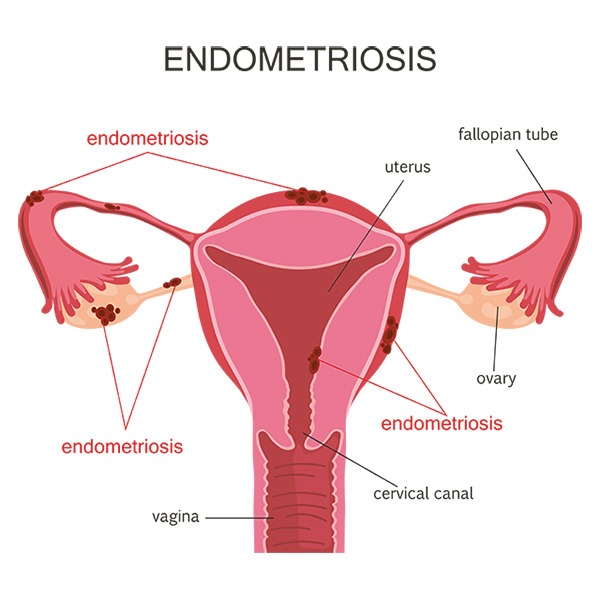 Endometriosis occurs when tissue similar to the uterine lining grows outside the uterus. As the condition progresses, these growths can damage the surrounding reproductive organs, impacting fertility.
Endometriosis occurs when tissue similar to the uterine lining grows outside the uterus. As the condition progresses, these growths can damage the surrounding reproductive organs, impacting fertility.
A type of tissue called endometrium lines the inside of the uterus. Throughout each month, the lining gets thicker, and it is at its thickest right before ovulation.
In a person with endometriosis, the abnormal tissue that grows outside the uterus behaves similarly. It thickens before ovulation, and during menstruation, it swells and bleeds into areas it should not be.
This swollen tissue may block the fallopian tubes or grow into the ovaries, which can make it more difficult for a person to get pregnant.
Read more about the link between endometriosis and infertility, how a person can manage the condition, and fertility treatment options for those trying to conceive.
DOES ENDOMETRIOSIS CAUSE INFERTILITY?
Although endometriosis does not necessarily cause infertility, it can reduce fertility in many people. This does not mean individuals with endometriosis cannot get pregnant — instead, it means they may have a more challenging time getting pregnant.
Experts estimate that about half of women with infertility also have endometriosis.
Endometriosis is a progressive condition, which means it can gradually worsen over time. As more and more patches of endometriosis tissue grow in the pelvic and abdominal areas, they can block the reproductive organs. This makes it harder for sperm to reach the egg.
Additionally, these growths can damage the reproductive organs, preventing them from working properly.
Endometriosis can also affect fertility by:
- preventing an embryo from implanting
- scarring the fallopian tubes
- affecting egg growth
- creating a hormonal imbalance
- causing chronic inflammation in the pelvis
ENDOMETRIOSIS TYPES AND FERTILITY
There are three main types of endometriosis: superficial peritoneal, endometriomas, and deeply infiltrating. These classifications describe where the endometriosis patches have grown in a person’s body.
A person can have one or multiple types.
Additionally, medical professionals divide endometriosis into stages. They range from I–IV, with stage I being the least severe and stage IV the most severe.
SUMMARY
Endometriosis is a condition where endometrial-like tissue grows outside the uterus. It can impact a person’s fertility, making it harder to get pregnant.
People in the early stages of the disease may be able to conceive without medical assistance, but they are likely to need medication, IUI, or IVF in the later stages.
Living with endometriosis can be difficult, and support groups and resources can help those who are struggling.
Source: www.medicalnewstoday.com